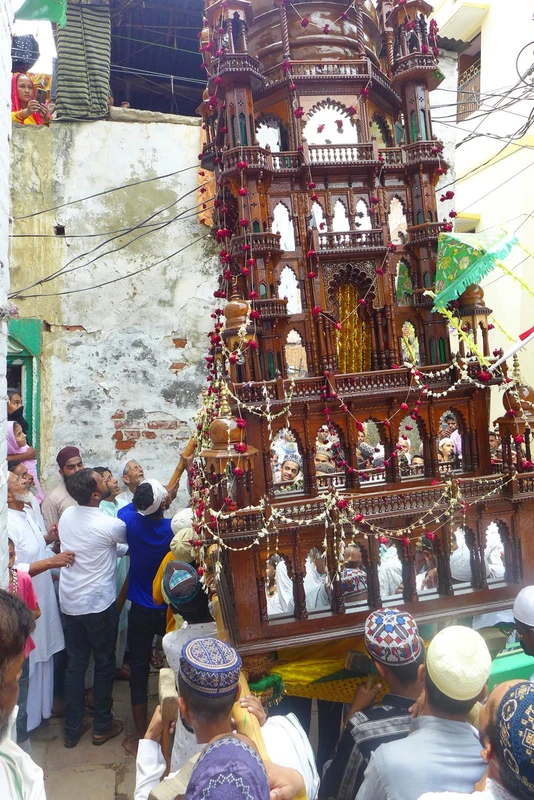Mughal Banaras: Forgotten Histories in a Troubled Present
15 Jan-21 Mar 2026


This exhibition uncovers Banaras beyond its familiar identity as a Hindu pilgrimage city, bringing to light its vibrant Mughal heritage. Combining photography and archival research, it showcases overlooked sites, daily life, and the cultural legacy of Mughal descendants, underscoring their enduring significance in today’s politically charged context.
Banaras, or Varanasi, in north India, is widely known as a Hindu pilgrimage city where devout pilgrims aspire to visit its temples or be cremated on the famous stepped terraces, or ghats, beside the river Ganges. However, this dominant view overlooks the city’s diverse communities and their profound role in shaping its rich history and urban heritage over the centuries.
This photographic exhibition throws light on Bananas’ rich Mughal past and present by going beyond the riverfront into the hidden lanes, neighbourhoods and sites associated with the ‘later’ Mughals, in particular Crown Prince Jahandar Shah, son of Emperor Shah Alam II. Jahandar Shah (1749-1788) was granted refuge in Banaras by the British, after fleeing courtly intrigues in Delhi. In 1788, he suddenly died and was buried in a place called Badshah Bagh. His descendants continued living in the city contributing to its vibrant cultural and religious life. They built neighbourhoods, imperial mosques, extensive pleasure gardens and cemeteries, patronised popular devotional sites including the resplendent Dargah-i-Fatman and the picturesque Chunar Dargah, and participated in festivals such as the spectacular Muharram procession.
Without the protected status of early Mughal monuments, these sites remain marginalized and invisible in the public eye. Drawing on the collaboration between historian Malavika Kasturi and architect and photographer Jateen Lad, these photographs present everyday moments at these sites. Extensive archival research intertwined with religion, politics, architecture, urbanism and conservation highlight their enduring value and multiple fragilities.
In today’s charged political environment, the Mughals are misrepresented in the public domain. Troubling arguments over contested claims and ever-present threats of demolition take aim at their built heritage. Captured on mobile phones and compact cameras, they evoke a lingering atmosphere of unease and delicate uncertainty. These photographs were taken in July 2023 and August 2024 during periods of heightened tensions in Banaras. In bringing together these sites of forgotten histories, this exhibition aims to further enrich understanding of the past and present of one of India’s most significant cities.